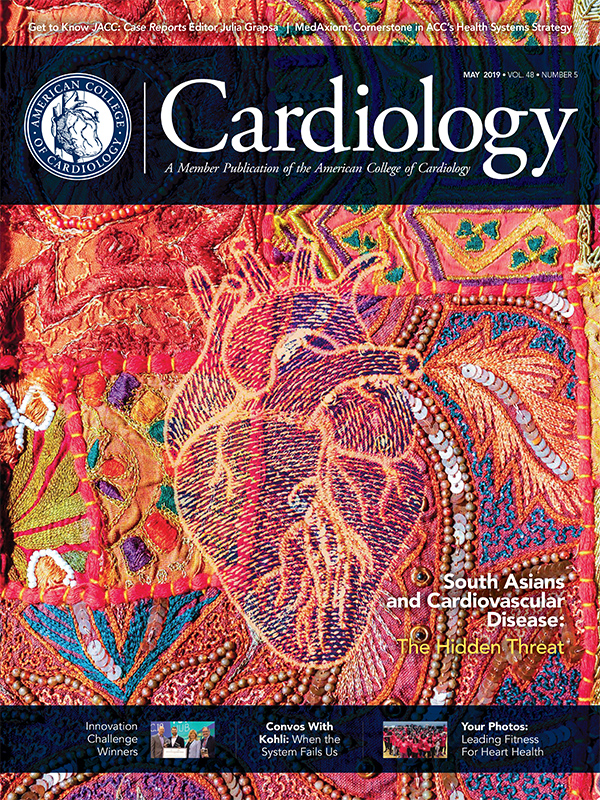Heart of Health Policy | Streamlined Documentation For E/M Services May Inadvertently Increase Clinician Burden

As part of the 2019 Physician Fee Schedule Final Rule, the Centers for Medicare and Medicaid Services (CMS) made documentation, coding and payment changes intended to streamline billing for Evaluation and Management (E/M) services for Medicare Fee-For-Service patients and reduce clinician burden.
Although CMS has been widely praised for its desire to minimize documentation requirements for E/M visits, much about the financial and workflow implications of these changes remain unknown. A recent policy brief published in Circulation: Cardiovascular Quality and Outcomes by Ty J. Gluckman, MD, FACC, and ACC's James J. Vavricek evaluates these implications.
In the brief, Gluckman and Vavricek highlight the notable adjustments in coding and payment structures set to take effect in 2021, that include:
- The effective collapse of the current five levels of new and established outpatient visit types into three levels: level 1, level 2 to 4 and level 5.
- A single blended payment rate for both new and established patients for level 2 to 4 visits.
- The option for each type of visit to meet documentation requirements through application of the current framework, medical decision-making or time.
- The introduction of new add-on codes* outlining additional resources required for the visit by clinicians working in primary care and nonprocedural, medical specialties including cardiology.
- Introduction of a new visit add-on code* when clinicians require extra time spent with the patient. *Only applicable to level 2 to 4 visits.
Specific concern has been raised over the collapsed payment rate for the new level 2 to 4 visit, particularly among clinicians seeing patients with complex care needs. While CMS states that the policy maintains payment neutrality, there is concern the policy does not account for the fact that distribution of billed visits may not be bell-shaped within a specialty.
"In cardiology, for example, greater patient complexity and a higher burden of comorbid conditions has in part accounted for a distribution of E/M visits skewed rightward, with far greater level 4 than level 2 visits," write Gluckman and Vavricek. "As a result, CMS has projected a two percent net reduction in payments to cardiologists with these changes."
Additionally, commercial payers have not yet weighed in as to whether they will adopt CMS' recommendation. Failure to accept these changes would result in multiple coding schema and the almost certain worsening of clinician dissatisfaction.
Concern has also been raised that lower reimbursement for some clinicians could incent shorter visits, further reducing face-to-face time with patients, potentially reducing patient and provider satisfaction and resulting in an overall lower quality interaction.
Further, for patients with complex care needs, shorter encounters could result in more frequent office visits and a larger annual spend on copayments.
Although this coding structure has been finalized for 2021, changes could still be made in future rulemaking. Gluckman and Vavricek suggest that CMS should rely on an American Medical Association workgroup to further address complicated issues related to documentation, coding and payment.
In finalizing the changes for 2021, CMS noted that "a two-year delay in implementation" would allow the agency to consider stakeholder recommendations.

As part of the 2019 Physician Fee Schedule Final Rule, the Centers for Medicare and Medicaid Services (CMS) made documentation, coding and payment changes intended to streamline billing for Evaluation and Management (E/M) services for Medicare Fee-For-Service patients and reduce clinician burden.
Although CMS has been widely praised for its desire to minimize documentation requirements for E/M visits, much about the financial and workflow implications of these changes remain unknown. A recent policy brief published in Circulation: Cardiovascular Quality and Outcomes by Ty J. Gluckman, MD, FACC, and ACC's James J. Vavricek evaluates these implications.
In the brief, Gluckman and Vavricek highlight the notable adjustments in coding and payment structures set to take effect in 2021, that include:
- The effective collapse of the current five levels of new and established outpatient visit types into three levels: level 1, level 2 to 4 and level 5.
- A single blended payment rate for both new and established patients for level 2 to 4 visits.
- The option for each type of visit to meet documentation requirements through application of the current framework, medical decision-making or time.
- The introduction of new add-on codes* outlining additional resources required for the visit by clinicians working in primary care and nonprocedural, medical specialties including cardiology.
- Introduction of a new visit add-on code* when clinicians require extra time spent with the patient. *Only applicable to level 2 to 4 visits.
Specific concern has been raised over the collapsed payment rate for the new level 2 to 4 visit, particularly among clinicians seeing patients with complex care needs. While CMS states that the policy maintains payment neutrality, there is concern the policy does not account for the fact that distribution of billed visits may not be bell-shaped within a specialty.
"In cardiology, for example, greater patient complexity and a higher burden of comorbid conditions has in part accounted for a distribution of E/M visits skewed rightward, with far greater level 4 than level 2 visits," write Gluckman and Vavricek. "As a result, CMS has projected a two percent net reduction in payments to cardiologists with these changes."
Additionally, commercial payers have not yet weighed in as to whether they will adopt CMS' recommendation. Failure to accept these changes would result in multiple coding schema and the almost certain worsening of clinician dissatisfaction.
Concern has also been raised that lower reimbursement for some clinicians could incent shorter visits, further reducing face-to-face time with patients, potentially reducing patient and provider satisfaction and resulting in an overall lower quality interaction.
Further, for patients with complex care needs, shorter encounters could result in more frequent office visits and a larger annual spend on copayments.
Although this coding structure has been finalized for 2021, changes could still be made in future rulemaking. Gluckman and Vavricek suggest that CMS should rely on an American Medical Association workgroup to further address complicated issues related to documentation, coding and payment.
In finalizing the changes for 2021, CMS noted that "a two-year delay in implementation" would allow the agency to consider stakeholder recommendations.
Clinical Topics: Cardiovascular Care Team
Keywords: ACC Publications, Cardiology Magazine, Health Policy, Fee-for-Service Plans, American Medical Association, Personal Satisfaction, Outpatients, Medicare, Office Visits, Primary Health Care, Fee Schedules, Physicians, Centers for Medicare and Medicaid Services, U.S., Medicaid, Documentation
< Back to Listings

